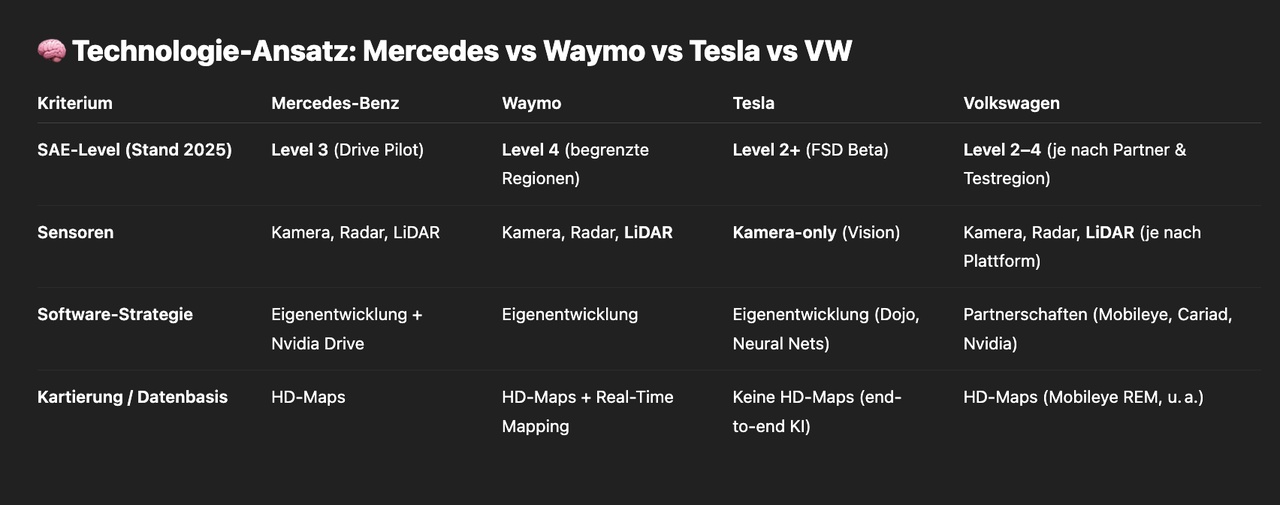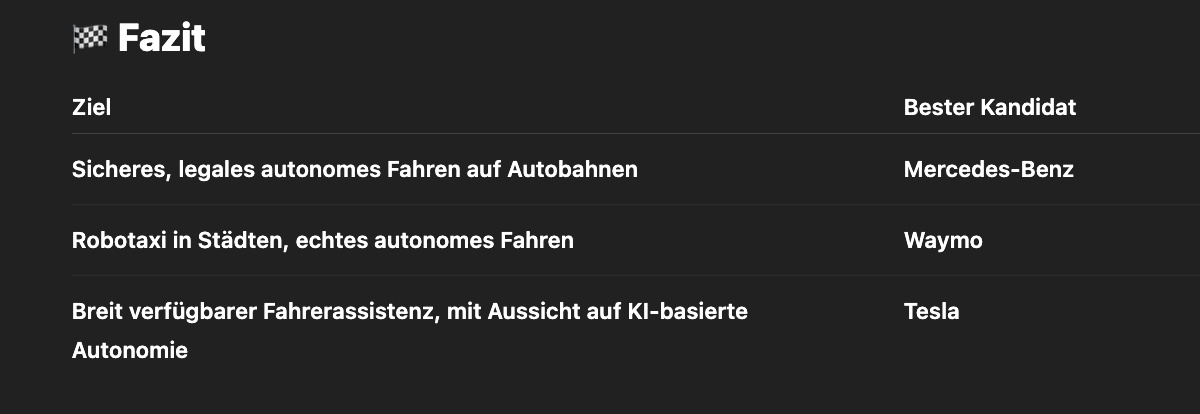Somehow, posts about $TSLA (+1,08 %)
$MBG (+0,81 %)
$VOW (+0,1 %) and the assistance systems always seem strange to me, so I asked ChatGPT.
(Prompt: "self-driving cars Mercedes vs waymo vs tesla"
AI says:

Investor perspective:
Whether self-driving cars based on cameras will get approval in Europe for fully autonomous driving remains to be seen, because there is definitely a lot of criticism of the pure AI+ camera strategy.
It may work faster in America and Asia, where the media can be bribed even better and accidents are less relevant than sales figures, but in the EU a very large disinformation campaign would have to work against the will of the European lobby, which uses the expensive lidar systems.
Conclusion again from ChatGPT:

Tesla, as usual, has not unlocked another level on the launch date now, so they are still level 2, right? https://www.handelsblatt.com/technik/it-internet/autonomes-fahren-tesla-startet-robotaxi-dienst-mit-einigen-einschraenkungen/100135657.html




